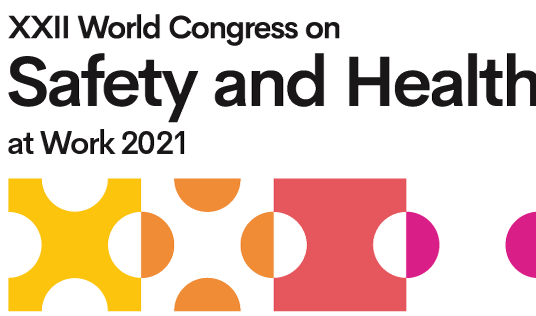Coming together for prevention in the connected age
Since its inception, the World Congress on Safety and Health at Work has been a platform for the OSH community to come together, find common ground and share ideas, innovations, strategies, and practical solutions that make work safer. Now more than ever, as the world recovers from a global pandemic, we need to work together, yet find ourselves incapable of convening as we have in the past.
It’s in the spirit of reaching across physical distances to convene and connect that the theme for the XXII World Congress came alive Prevention in the connected age: global solutions to achieve safe and healthy work for all.
Adversity sparks new opportunities
While high connectivity and the acceleration of information flow and processes
create challenges in our field, there is no doubt that these advancements spark
incredible opportunities and have given many of us the flexibility to navigate
these unprecedented times.
It’s thanks in no small part to digital advancements and communication that we can
collaborate with passionate individuals across borders and were able to welcome all of you to the
very first fully digital World Congress on Safety and Health at Work
Prevention must always come first
There is huge potential to make use of new technologies to improve occupational safety and health in a connected, digital world of work. Likewise, technology enabled us to honour our commitment to health and safety and we were able to provide you with a safe environment to exchange ideas and gain a renewed enthusiasm for OSH innovation.
Global trends, singular experiences
From CEOs to unions and public and private OSH organizations, the community we brought together was diverse and complex. While we are all affected by global trends, we all face singular challenges shaped by political, socio-economic, industrial and other factors that are specific to our situation. The digital Congress was particularly well-suited to offer a highly customizable program that was tailored to the unique interests and needs of delegates.
With a schedule that accommodated various time zones, and a platform that allowed delegates to plan their agenda ahead of time, they were able to completely personalize their event journeys. And, if they missed anything, the entire Congress was available online to watch at their convenience.
Coming together as a global community
All of the things that make us different, such as our geographical location or the entities and interests we represent, only serve to better highlight what brings us together: our common goal of creating safe and healthy work for all.
The XXII World Congress on Safety and Health at Work was an occasion to review and discuss the role of the tripartite model of governance, but also to see these dynamics at play on a global scale. Working together, we can accelerate progress towards a global culture of prevention.
New ways to connect
After a succession of lockdowns and the pivot to remote work, some of us might feel frustrated, isolated from our peers, and saturated from so much screen time. The XXII World Congress addressed these issues by providing delegates with new ways to connect and network with peers around the world.
From moderated chats during presentations to live discussions to hosting private conversation based on the topic of choice, delegates were able to connect with peers and actively interact with Congress content.
Spontaneous and unexpected interactions are what make an event exciting. Delegates took advantage of these opportunities to connect and engage with colleagues and left the Congress having found a renewed sense of community.
A holistic approach to Occupational Safety and Health
The Congress explored global solutions in the following key areas:
•Innovations in Addressing Longstanding Safety & Health Challenges
•Implications of the Changing World of Work for Occupational Safety and Health
•Advancing a Culture of Prevention
These innovative and stimulating programme featured knowledge and thoughtful
insights from speakers who addressed both traditional hazards in high-risk
sectors as well as new risks brought on by digitization.
A critical juncture in time
In a rapidly transforming world of work, it is imperative and urgent to reaffirm that the right to safe and healthy work is a basic human right, and that we embraced this momentum to un-tap growth and innovation for the benefit of all.
















